
GLPI is an open source IT Asset Management, issue tracking system and service desk system. This software is written in PHP and distributed as open-source software under the GNU General Public License. GLPI is a web-based application helping companies to manage their information system. In this step by step guide I will show you how to install GLPI on your Synology NAS using Docker & Portainer.
This guide works perfectly with the latest GLPI v10.0.18 release.
STEP 1
Please Support My work by Making a Donation.
STEP 2
Install Portainer using my step by step guide. If you already have Portainer installed on your Synology NAS, skip this STEP. Attention: Make sure you have installed the latest Portainer version.
STEP 3
Make sure you have a synology.me Wildcard Certificate. Follow my guide to get a Wildcard Certificate. If you already have a synology.me Wildcard certificate, skip this STEP.
STEP 4
Go to Control Panel / Login Portal / Advanced Tab / click Reverse Proxy. Follow the instructions in the image below.
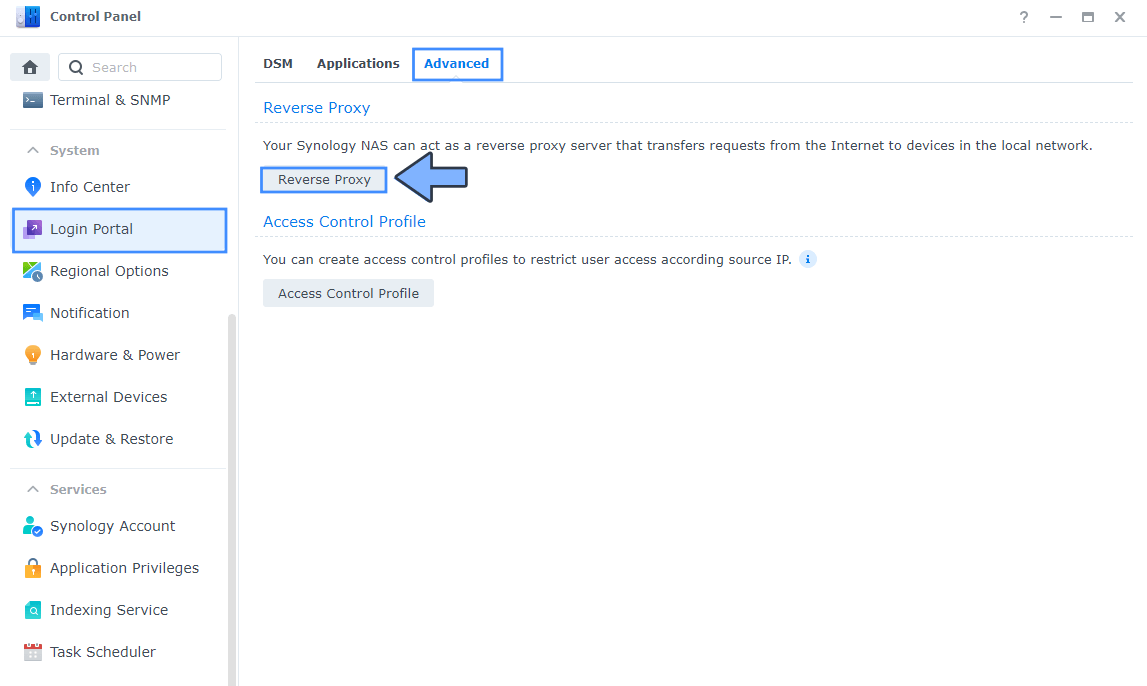
STEP 5
Now click the “Create” button. Follow the instructions in the image below.
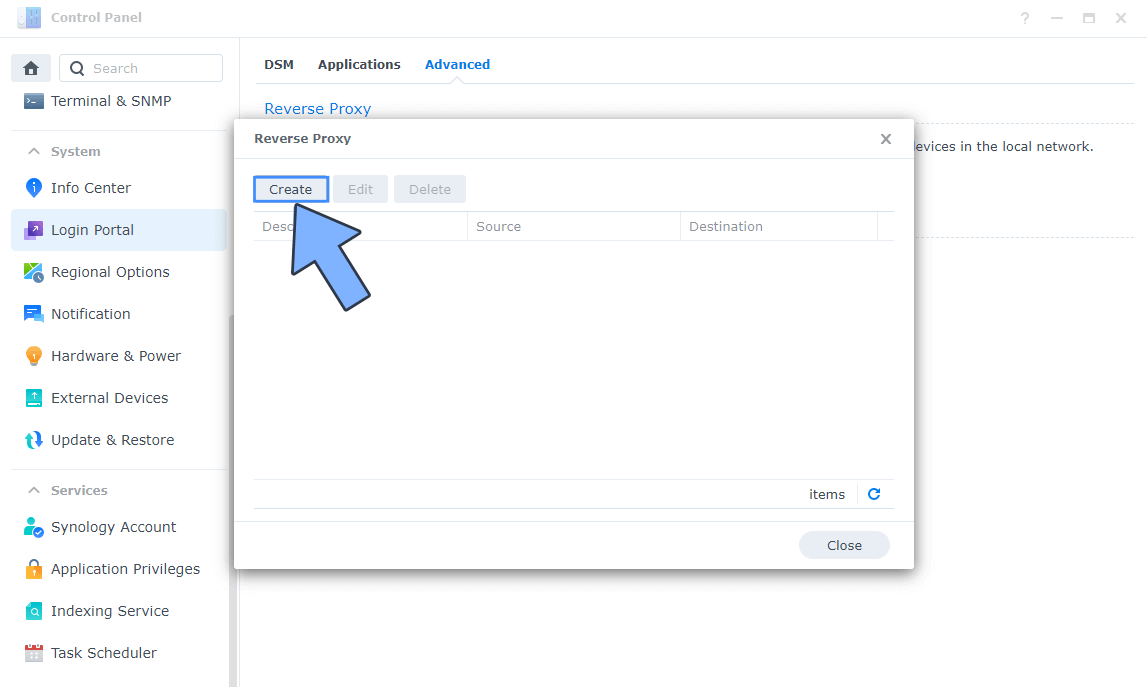
STEP 6
After you click the Create button, the window below will open. Follow the instructions in the image below.
On the General area, set the Reverse Proxy Name description: type in GLPI. After that, add the following instructions:
Source:
Protocol: HTTPS
Hostname: glpi.yourname.synology.me
Port: 443
Check Enable HSTS
Destination:
Protocol: HTTP
Hostname: localhost
Port: 8769

STEP 7
On the Reverse Proxy Rules, click the Custom Header tab. Click Create and then, from the drop-down menu, click WebSocket. After you click on WebSocket, two Header Names and two Values will be automatically added. Click Save. Follow the instructions in the image below.

STEP 8
Go to Control Panel / Network / Connectivity tab/ Check Enable HTTP/2 then click Apply. Follow the instructions in the image below.
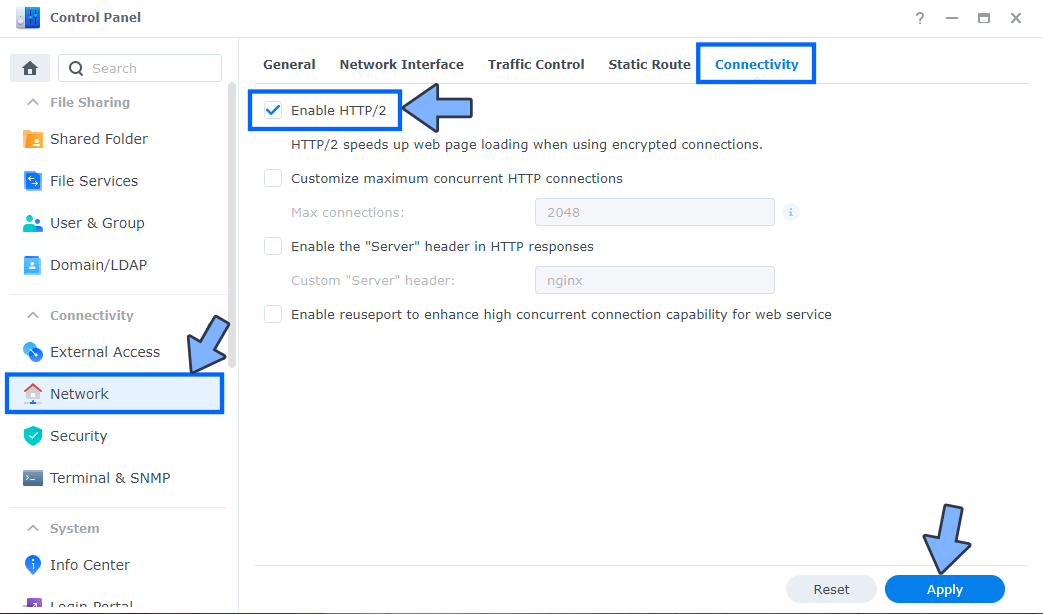
STEP 9
Go to Control Panel / Security / Advanced tab/ Check Enable HTTP Compression then click Apply. Follow the instructions in the image below.
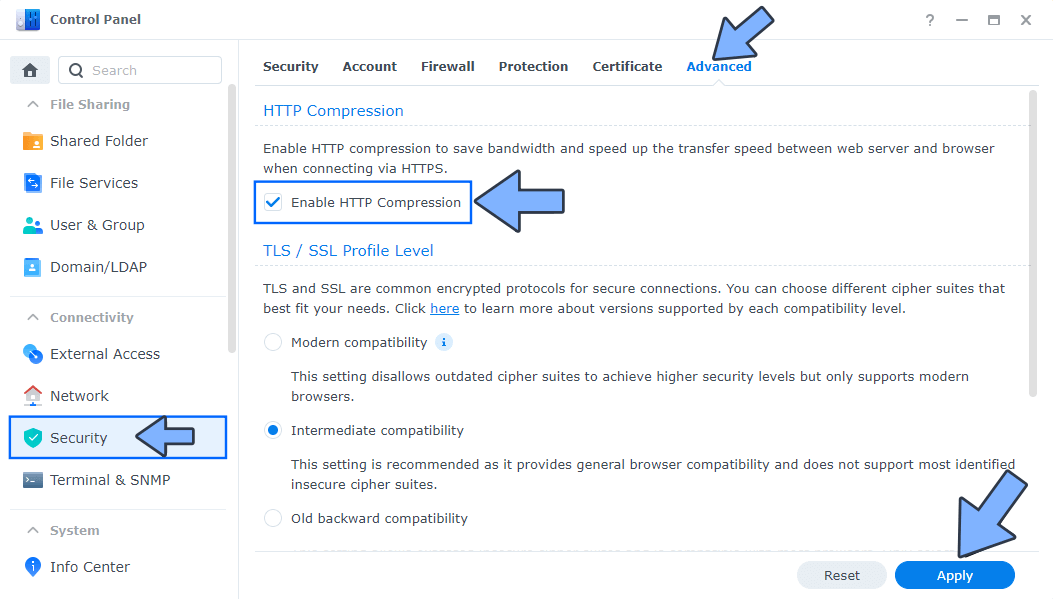
STEP 10
Go to File Station and open the docker folder. Inside the docker folder, create one new folder and name it glpi. Follow the instructions in the image below.
Note: Be careful to enter only lowercase, not uppercase letters.
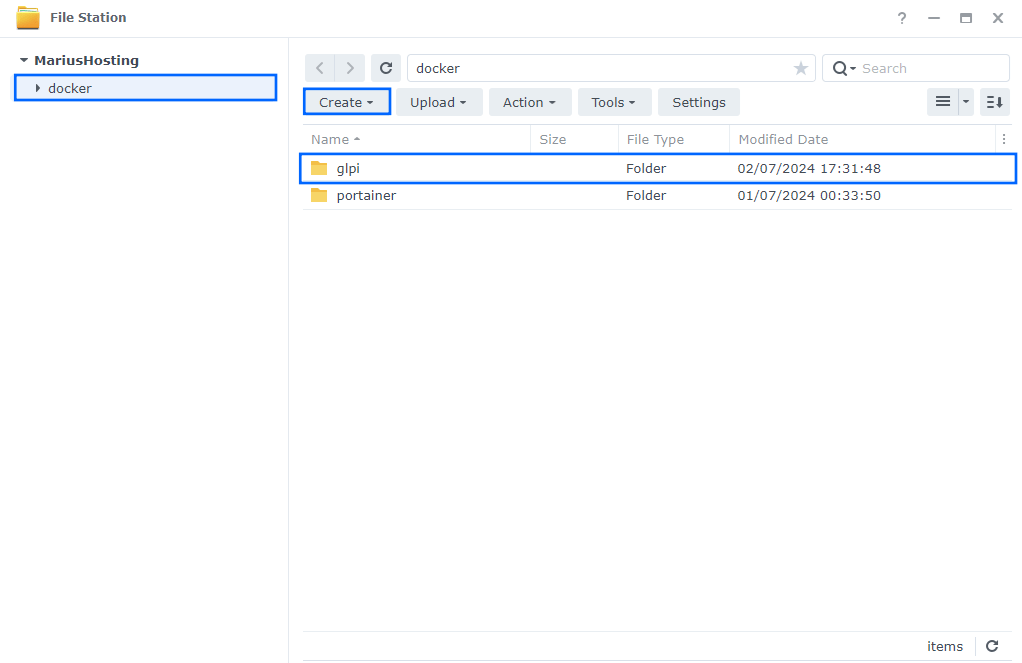
STEP 11
Now create two new folders inside the glpi folder that you created at STEP 10 and name them data and db. Follow the instructions in the image below.
Note: Be careful to enter only lowercase, not uppercase letters.
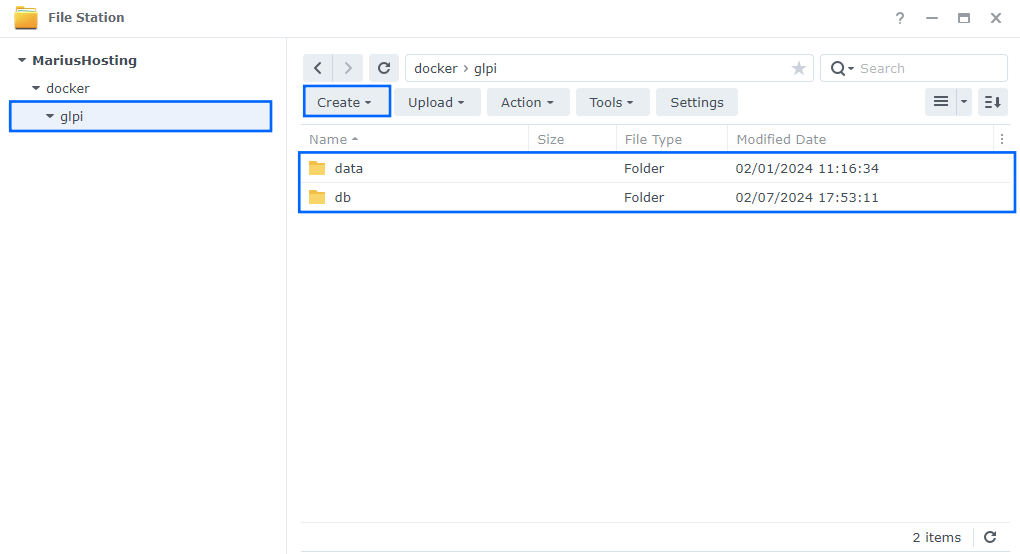
STEP 12
Log into Portainer using your username and password. On the left sidebar in Portainer, click on Home then Live connect. Follow the instructions in the image below.

On the left sidebar in Portainer, click on Stacks then + Add stack. Follow the instructions in the image below.

STEP 13
In the Name field type in glpi. Follow the instructions in the image below.
services:
db:
image: mariadb:10.11-jammy #LTS Long Time Support Until Feb 16, 2028.
container_name: GLPI-DB
volumes:
- /volume1/docker/glpi/db:/var/lib/mysql:rw
environment:
MARIADB_DATABASE: glpi
MARIADB_USER: glpiuser
MARIADB_PASSWORD: glpipass
MARIADB_ROOT_PASSWORD: rootpass
networks:
- glpi-network
restart: on-failure:5
glpi:
image: diouxx/glpi:latest
container_name: GLPI
healthcheck:
test: timeout 10s bash -c ':> /dev/tcp/127.0.0.1/80' || exit 1
interval: 10s
timeout: 5s
retries: 3
start_period: 90s
volumes:
- /etc/localtime:/etc/localtime:ro
- /volume1/docker/glpi/data:/var/www/html/glpi:rw
ports:
- 8769:80
environment:
TIMEZONE: Europe/Bucharest
GLPI_DB_NAME: glpi
GLPI_DB_USER: glpiuser
GLPI_DB_PASSWORD: glpipass
GLPI_DB_ADMIN_PASSWORD: rootpass
networks:
- glpi-network
restart: on-failure:5
depends_on:
db:
condition: service_started
networks:
glpi-network:
external: false
Note: Before you paste the code above in the Web editor area below, change the value for TIMEZONE. (Select your current Time Zone from this list.)
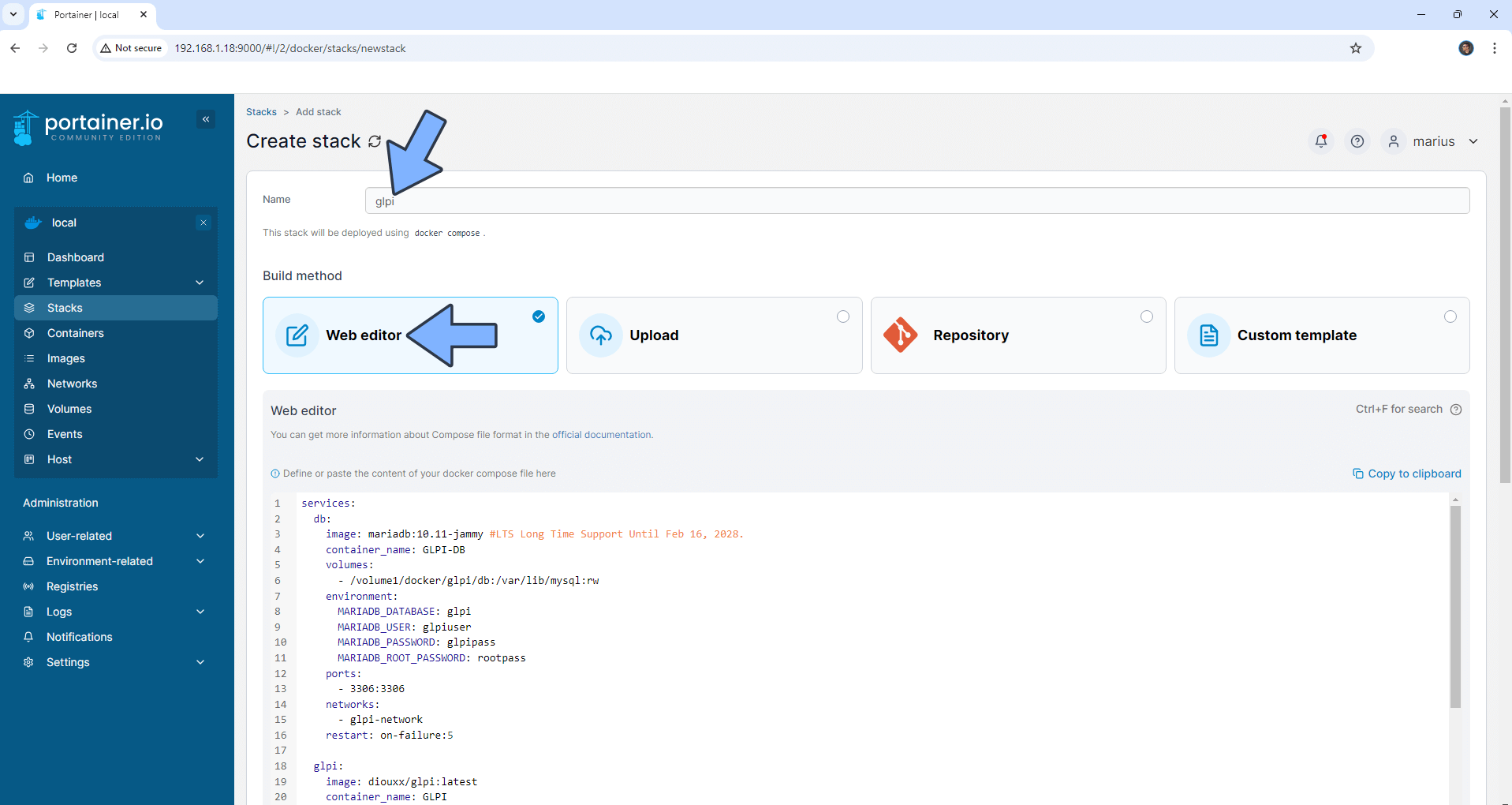
STEP 14
Scroll down on the page until you see a button called Deploy the stack. Click on it. Follow the instructions in the image below. The installation process can take up to a few minutes. It will depend on your Internet speed connection.

STEP 15
If everything goes right, you will see this message at the top right of your screen: “Success Stack successfully deployed“.

STEP 16
🟢Please Support My work by Making a Donation. Almost 99,9% of the people that install something using my guides forget to support my work, or just ignore STEP 1. I’ve been very honest about this aspect of my work since the beginning: I don’t run any ADS, I don’t require subscriptions, paid or otherwise, I don’t collect IPs, emails, and I don’t have any referral links from Amazon or other merchants. I also don’t have any POP-UPs or COOKIES. I have repeatedly been told over the years how much I have contributed to the community. It’s something I love doing and have been honest about my passion since the beginning. But I also Need The Community to Support me Back to be able to continue doing this work.
STEP 17
The installation process can take up to a few seconds/minutes. Now open your browser and type in your HTTPS/SSL certificate like this https://glpi.yourname.synology.me In my case it’s https://glpi.mariushosting.synology.me If everything goes right, you will see the GLPI setup page. Select your language, then click OK. Follow the instructions in the image below.

STEP 18
Accept the License. Click Continue. Follow the instructions in the image below.
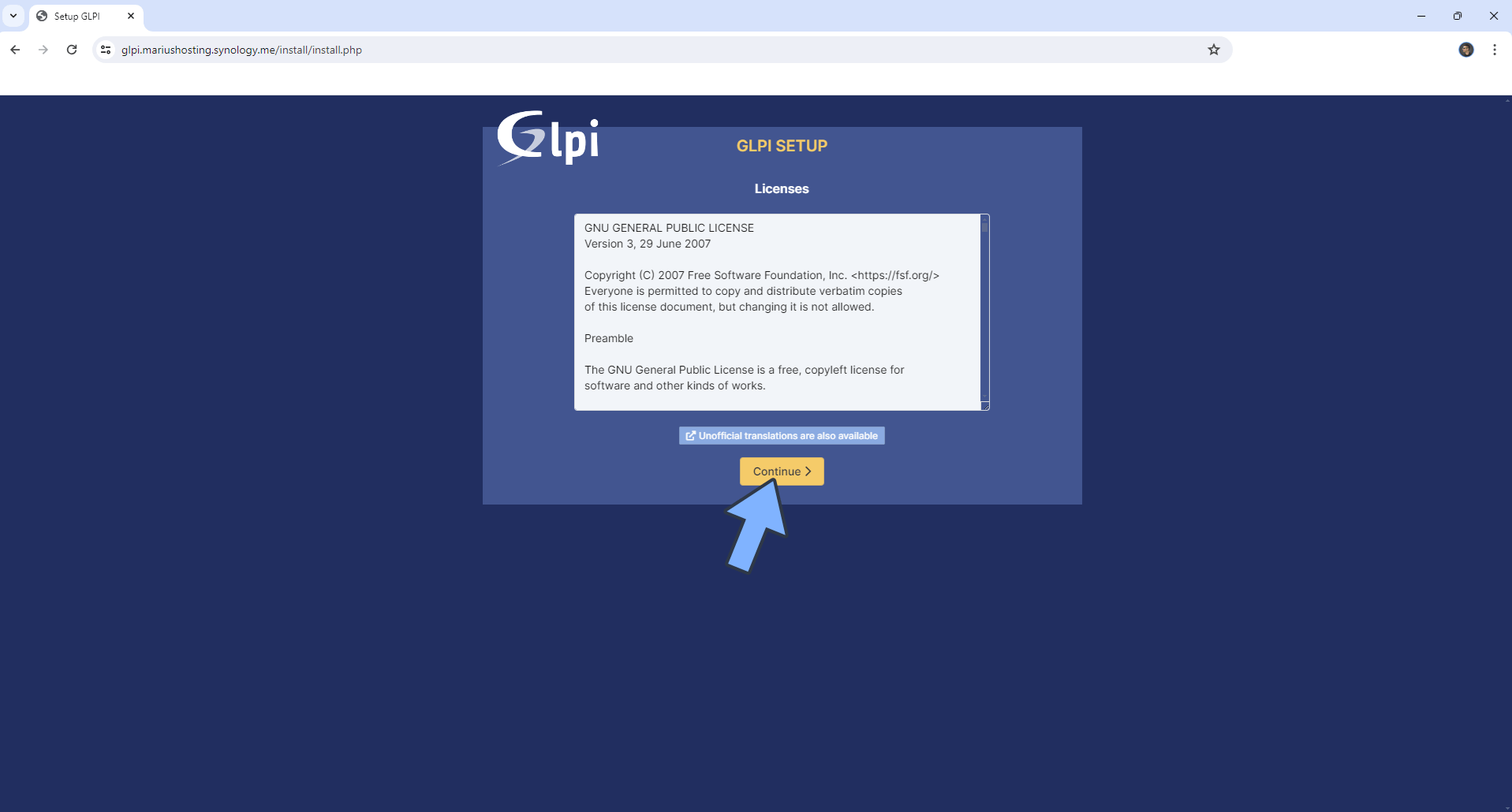
STEP 19
Click Install. Follow the instructions in the image below.
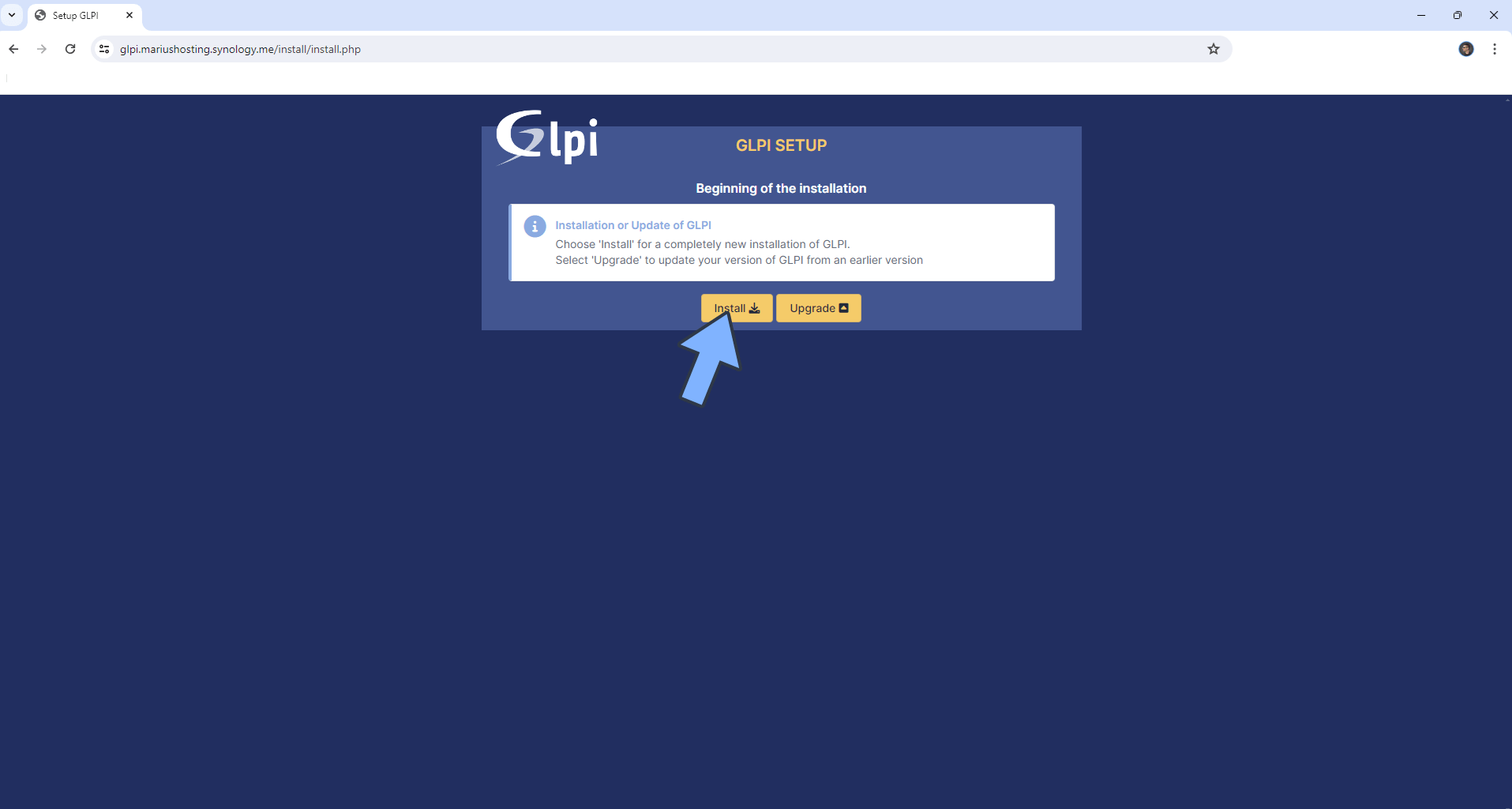
STEP 20
Scroll down the page until you find the Continue button. Follow the instructions in the image below.

STEP 21
Click Continue. Follow the instructions in the image below.

STEP 22
Add the following database connection setup instructions, then click Continue. Follow the instructions in the image below.
In the SQL Server (MariaDB or MySQL) area, type in db
In the SQL User area, type in glpiuser
In the SQL Password area, type in glpipass

STEP 23
Select the glpi database, then click Continue. Follow the instructions in the image below.

STEP 24
Just wait for the database to be initialized. This process will take 5–10 minutes. Do NOT close the page. Do NOT refresh the page. Just wait until the process is finished. Follow the instructions in the image below.
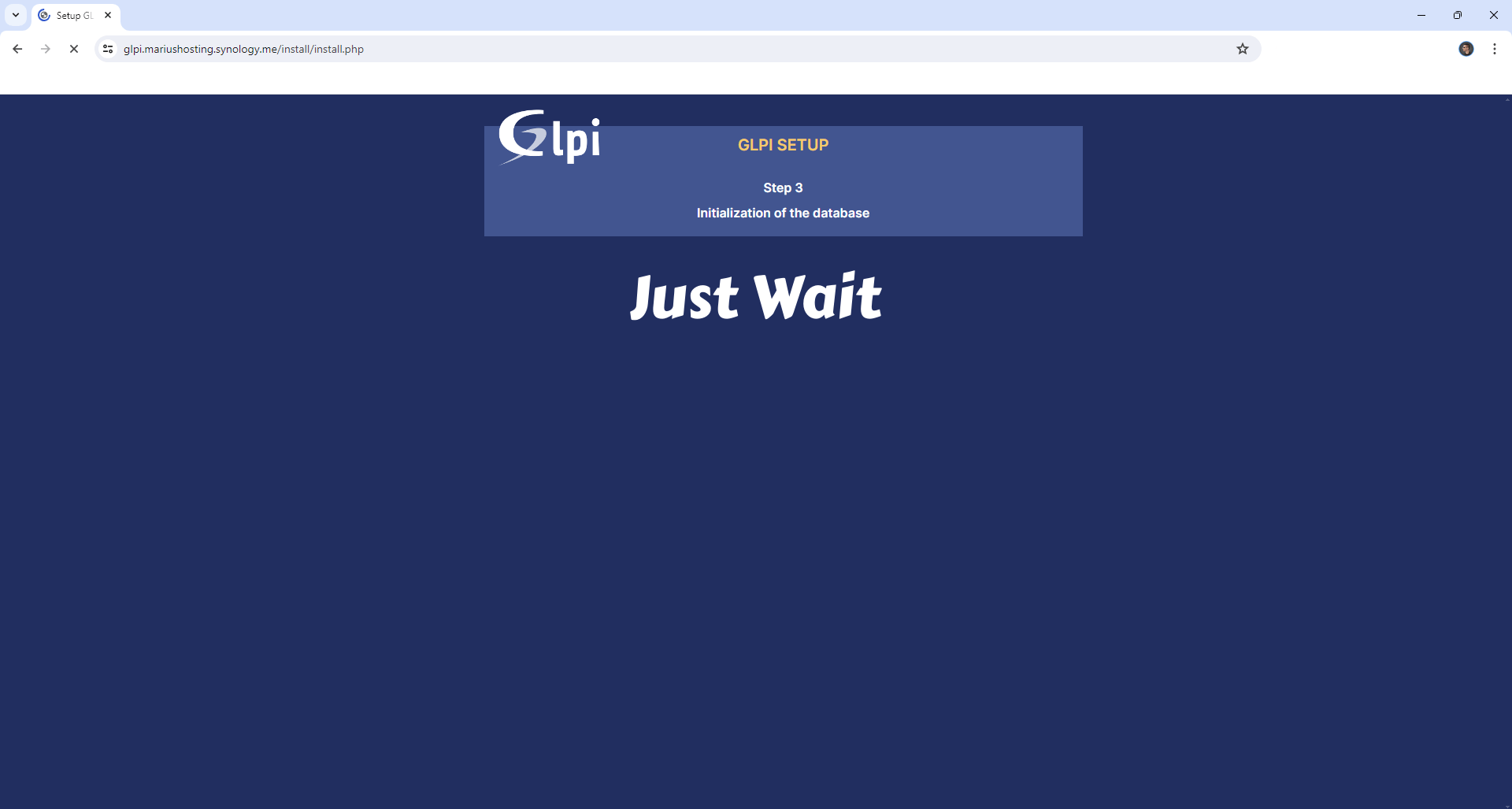
STEP 25
Click Continue. Follow the instructions in the image below.
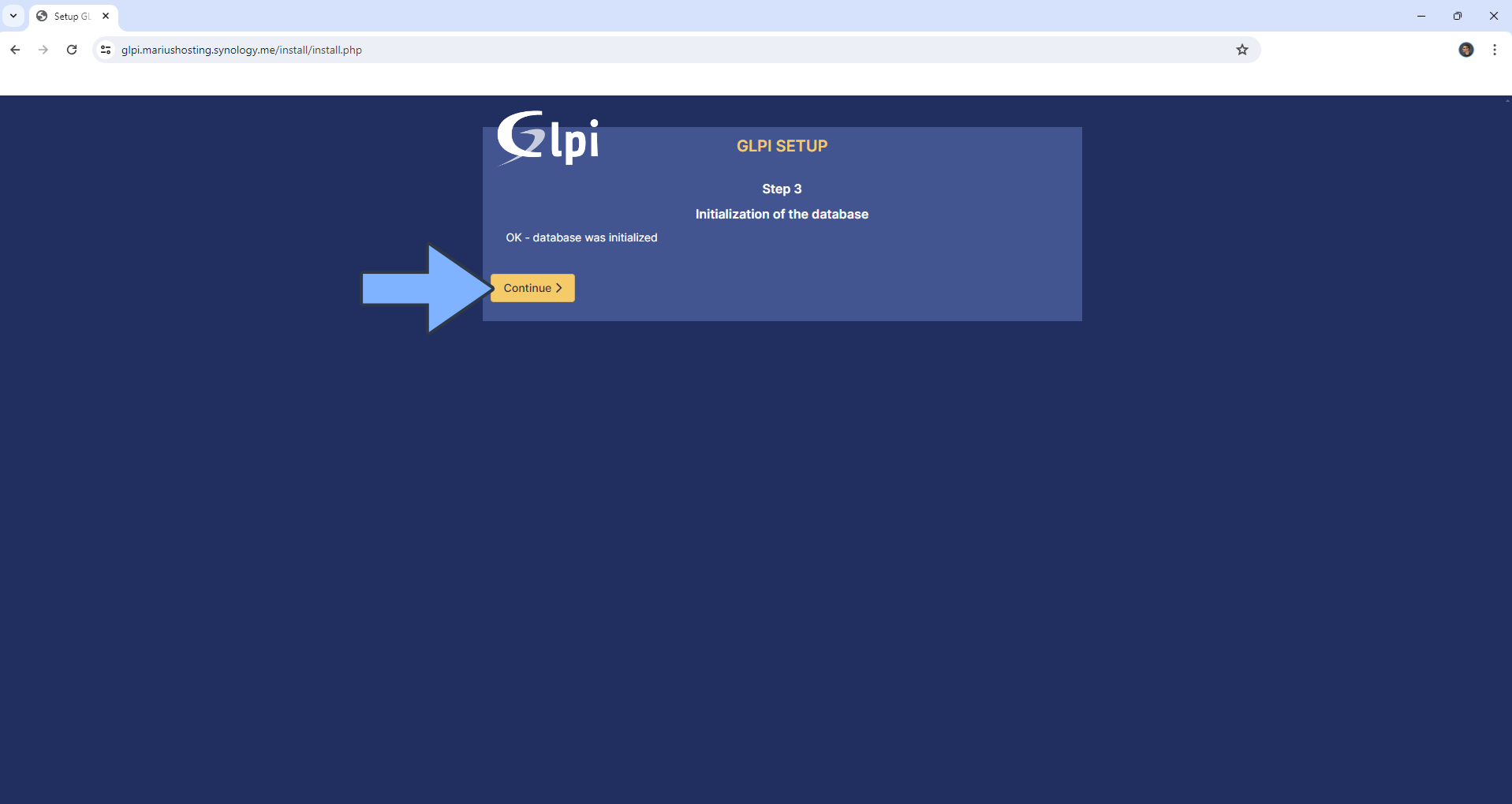
STEP 26
Click Continue. Follow the instructions in the image below.
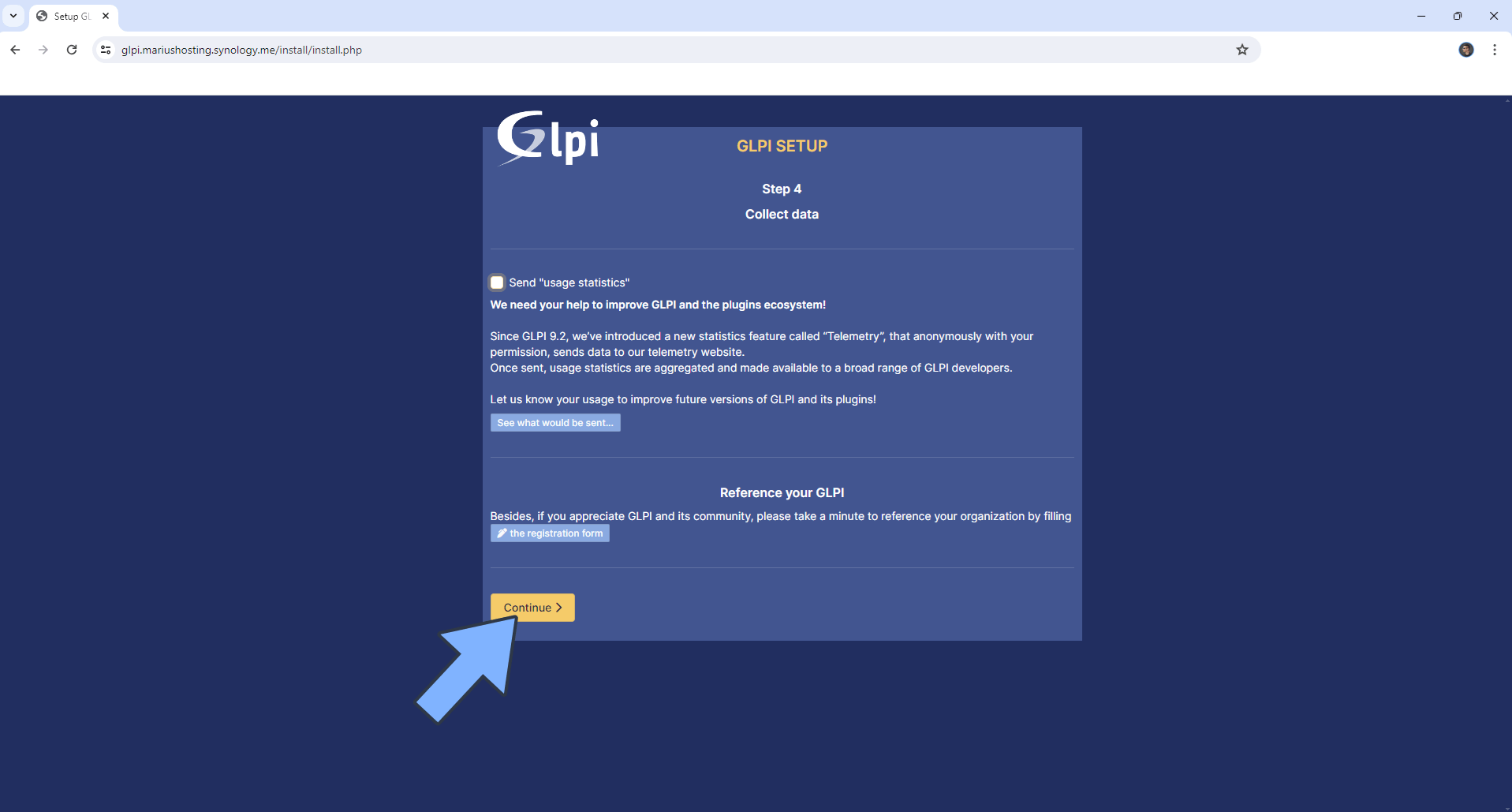
STEP 27
Click Continue. Follow the instructions in the image below.

STEP 28
Click Use GLPI. Follow the instructions in the image below.
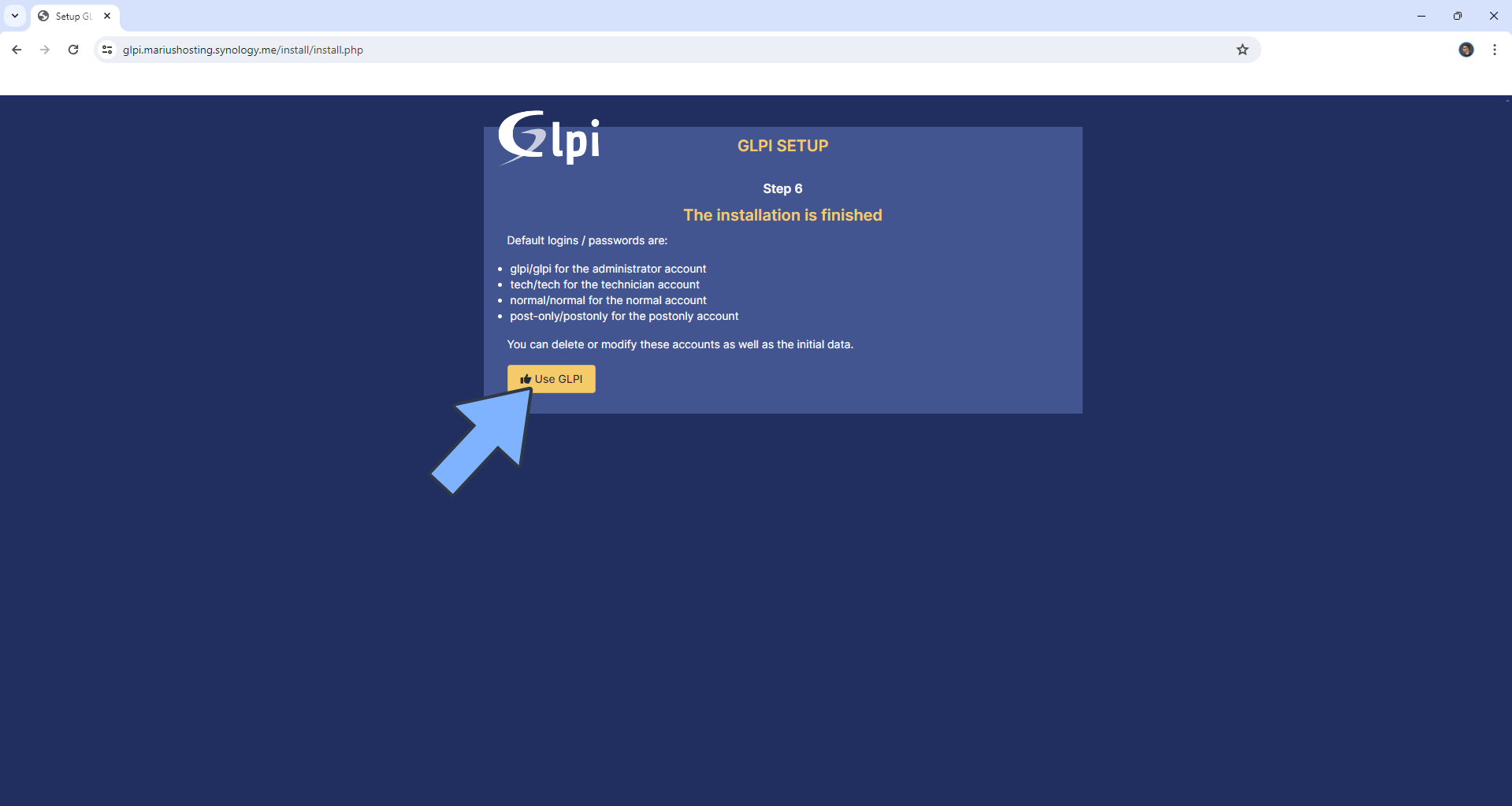
STEP 29
Type in the default username and password, then click Sign in.
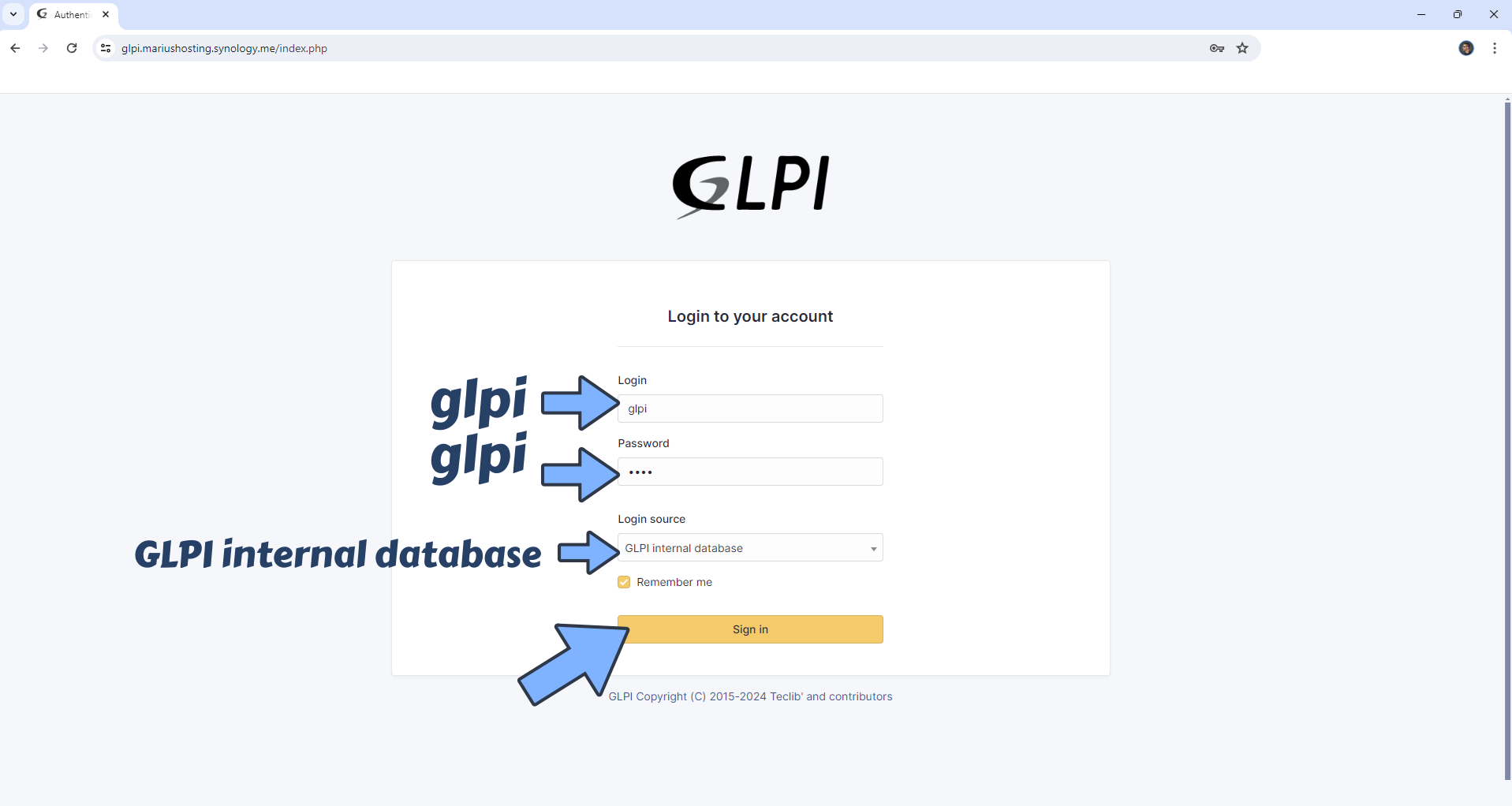
STEP 30
Your GLPI dashboard will look like this. Follow the instructions in the image below.
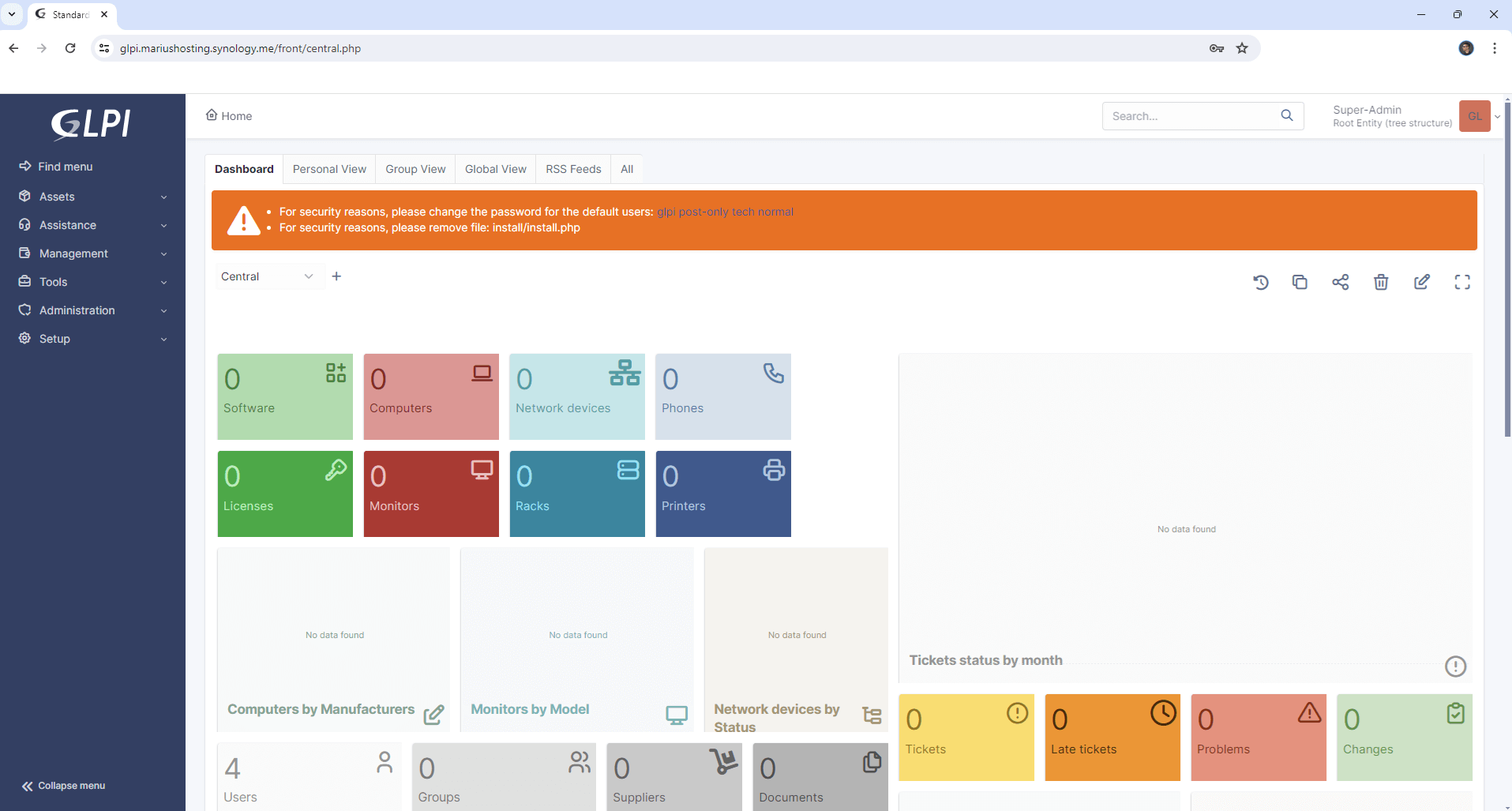
STEP 31
Open the data folder that you have previously created in File Station at STEP 11, then open the install folder. Delete the install.php file. Follow the instructions in the image below.
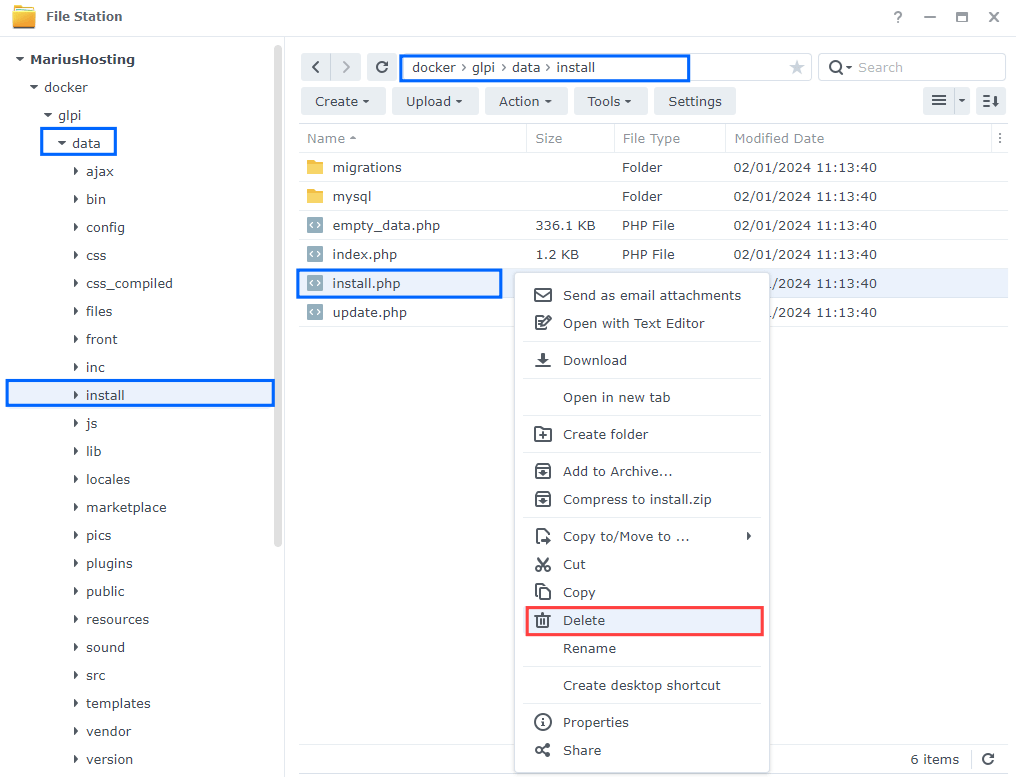
STEP 32
Open your GLPI instance page, then click glpi post-only tech normal. Change the users and passwords for all accounts. Follow the instructions in the image below.
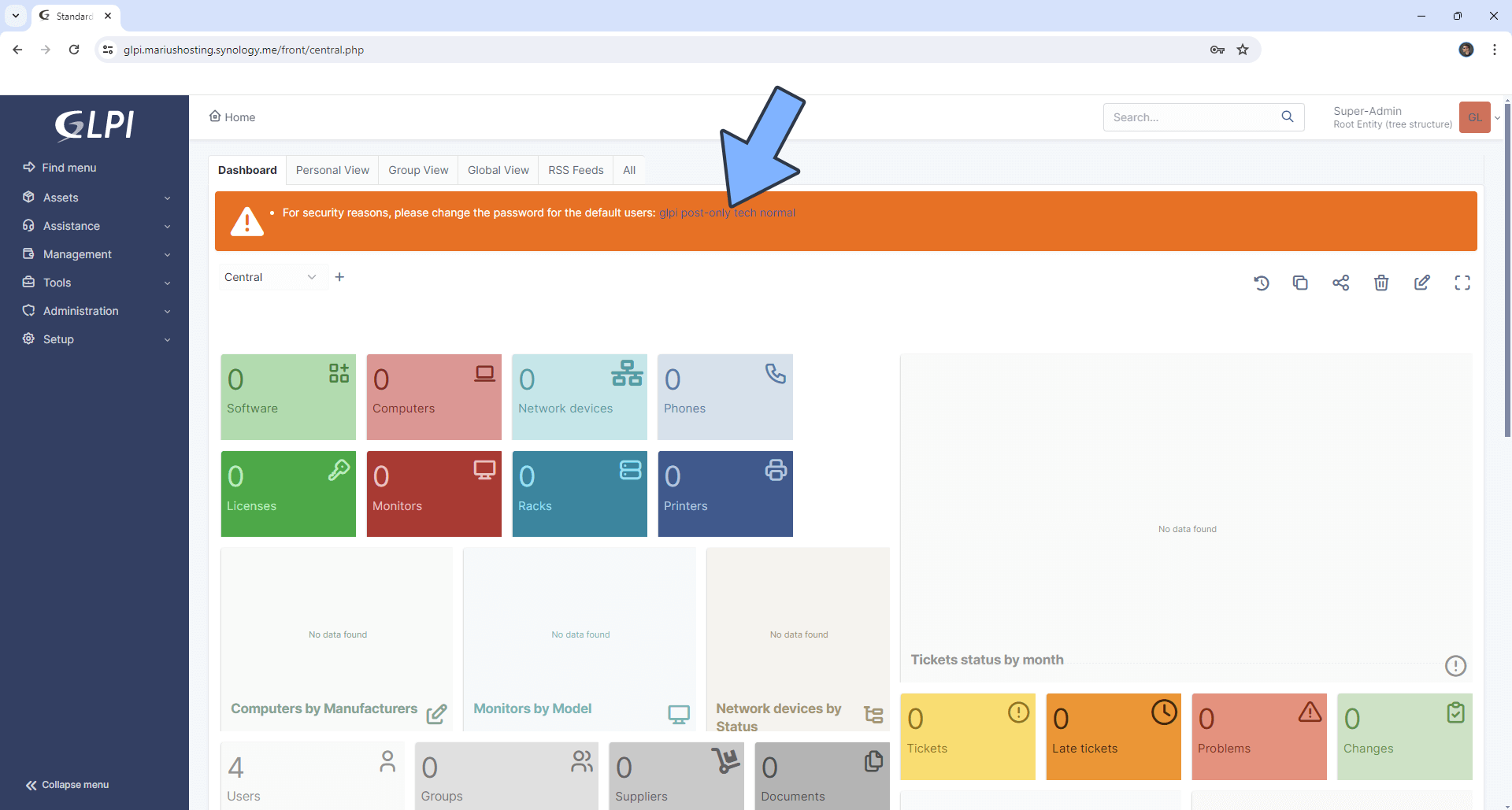
STEP 33
Change the user and the password, then scroll down the page until you find a Save button. Follow the instructions in the image below.
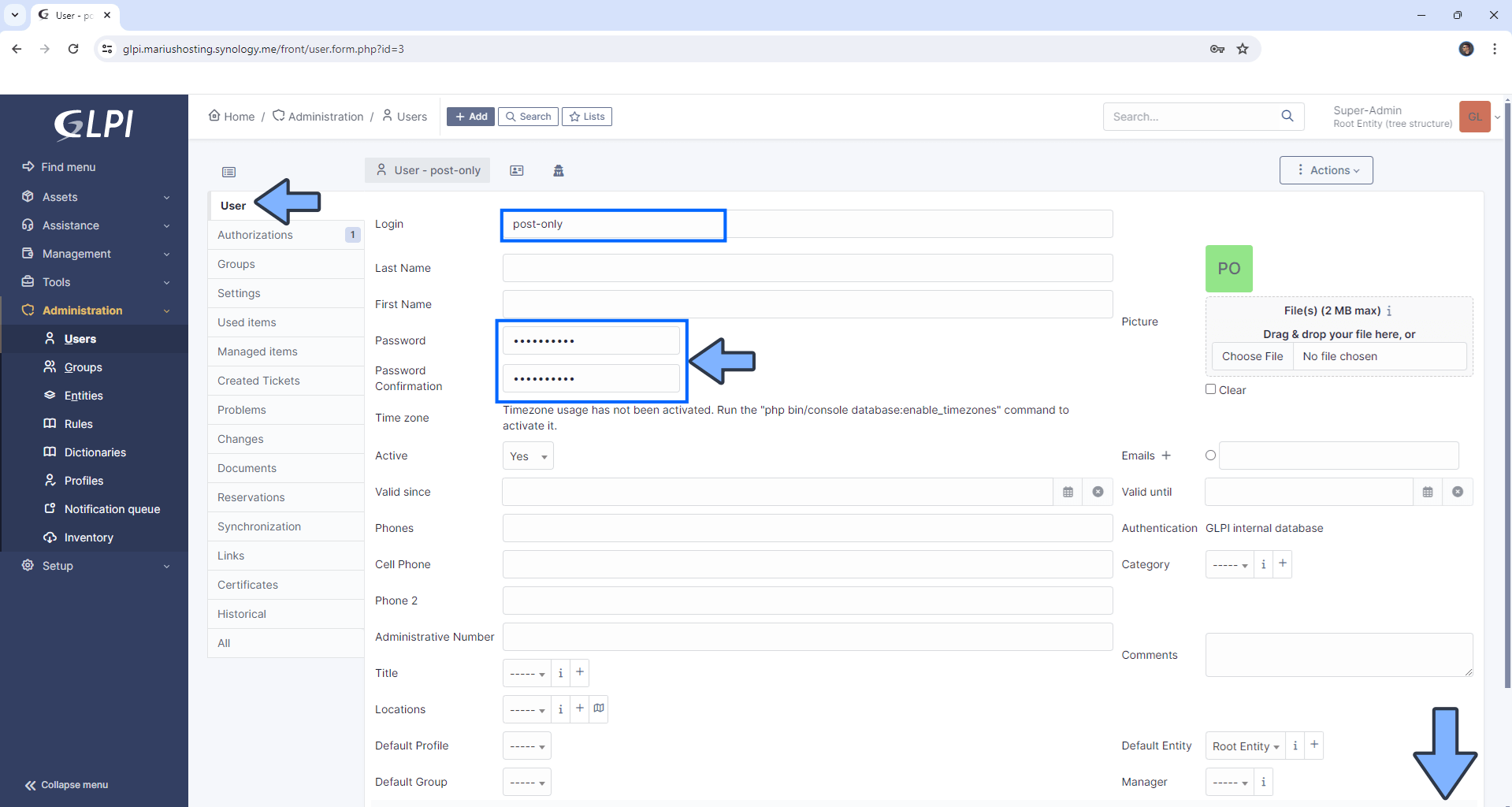
STEP 34
Click Save. Follow the instructions in the image below. Repeat the same operation for all user accounts.
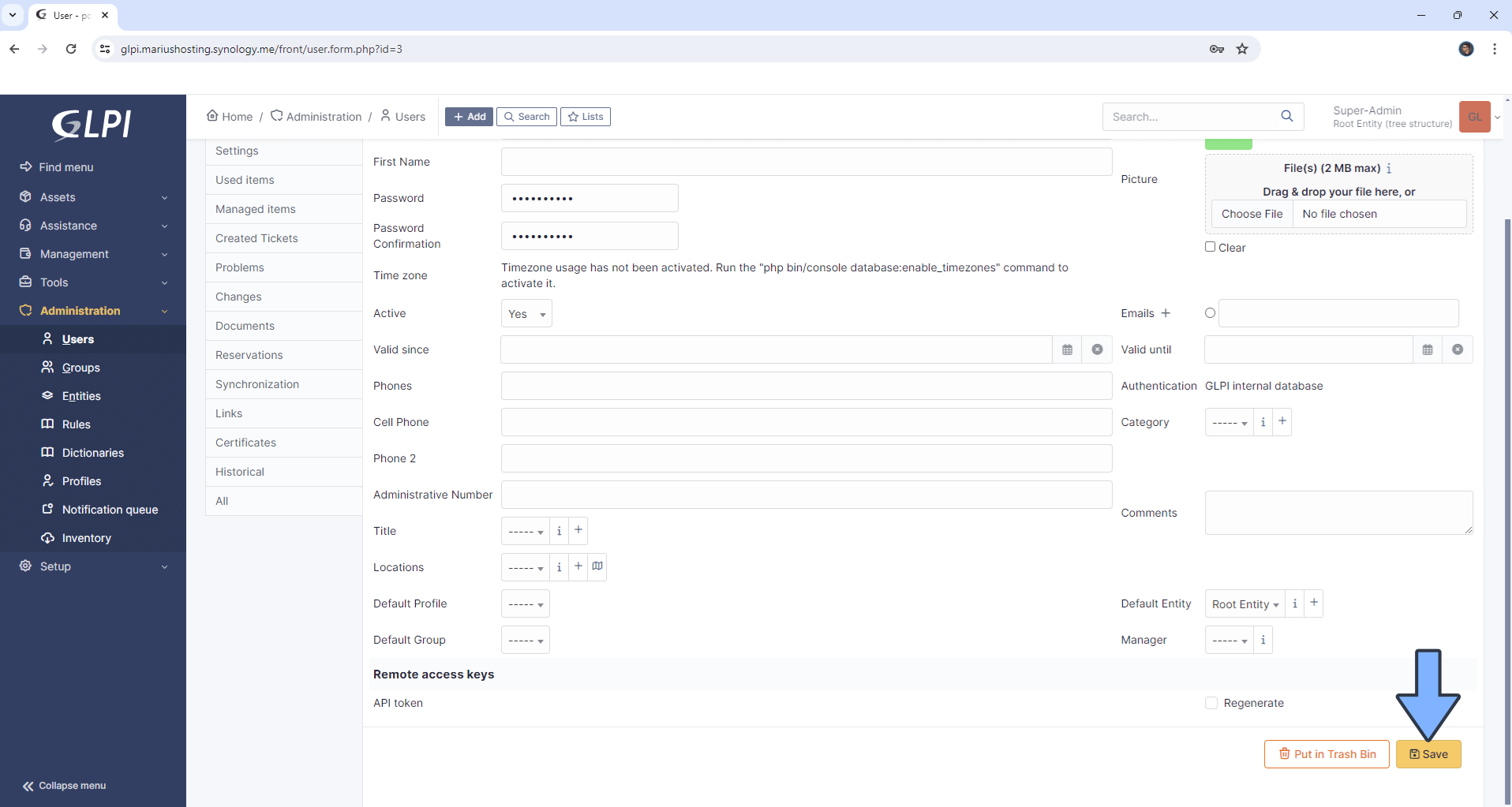
STEP 35
Your GLPI dashboard at a glance!

Enjoy GLPI!
If you encounter issues by using this container, make sure to check out the Common Docker issues article.
Note: Can I run Docker on my Synology NAS? See the supported models.
Note: How to Back Up Docker Containers on your Synology NAS.
Note: Find out how to update the GLPI container with the latest image.
Note: How to Free Disk Space on Your NAS if You Run Docker.
Note: How to Schedule Start & Stop For Docker Containers.
Note: How to Activate Email Notifications.
Note: How to Add Access Control Profile on Your NAS.
Note: How to Change Docker Containers Restart Policy.
Note: How to Use Docker Containers With VPN.
Note: Convert Docker Run Into Docker Compose.
Note: How to Clean Docker.
Note: How to Clean Docker Automatically.
Note: Best Practices When Using Docker and DDNS.
Note: Some Docker Containers Need WebSocket.
Note: Find out the Best NAS Models For Docker.
Note: Activate Gmail SMTP For Docker Containers.
This post was updated on Sunday / August 24th, 2025 at 4:14 PM
